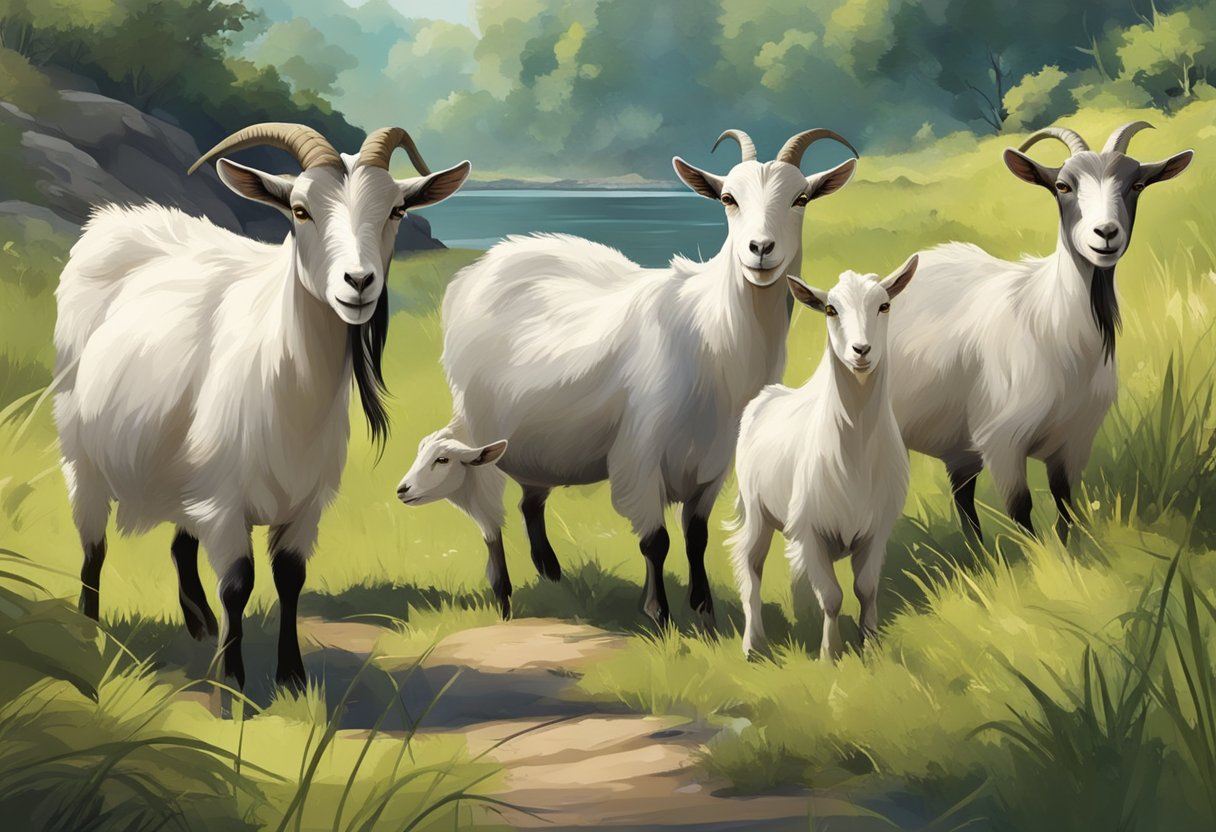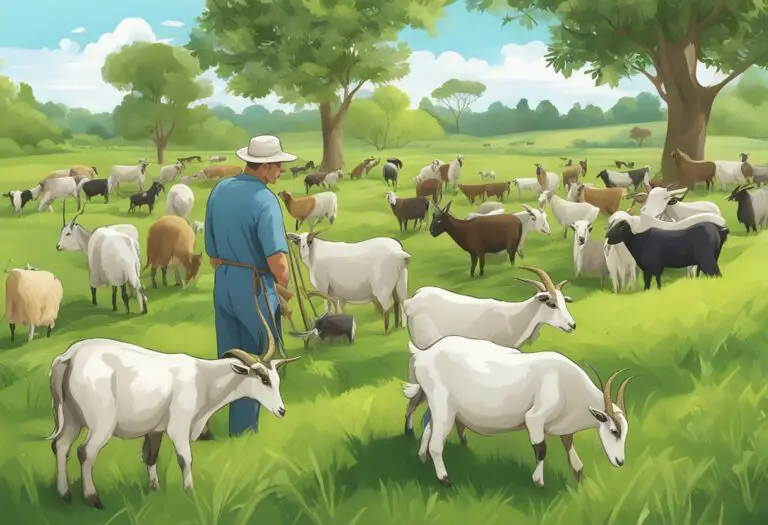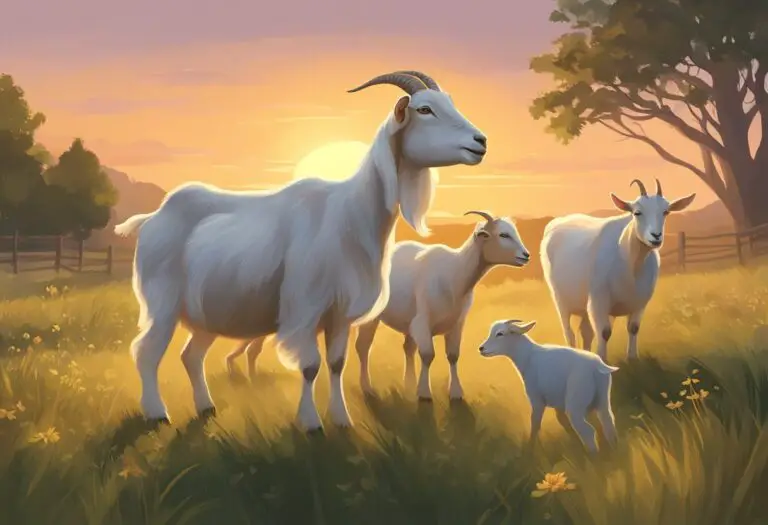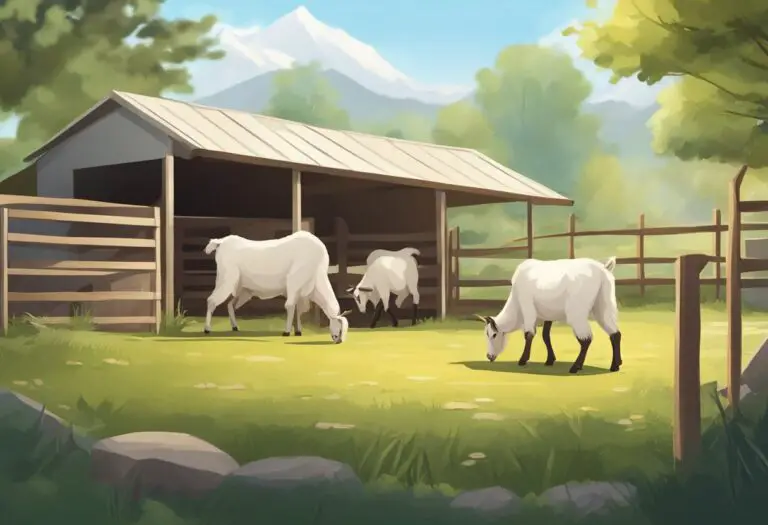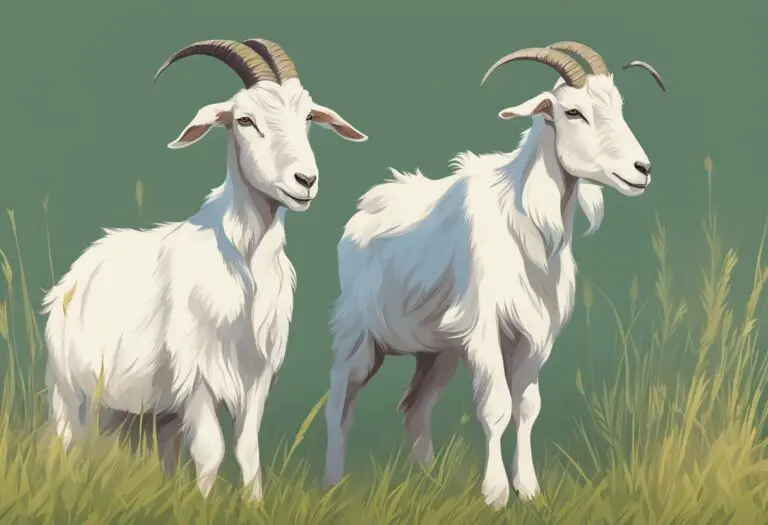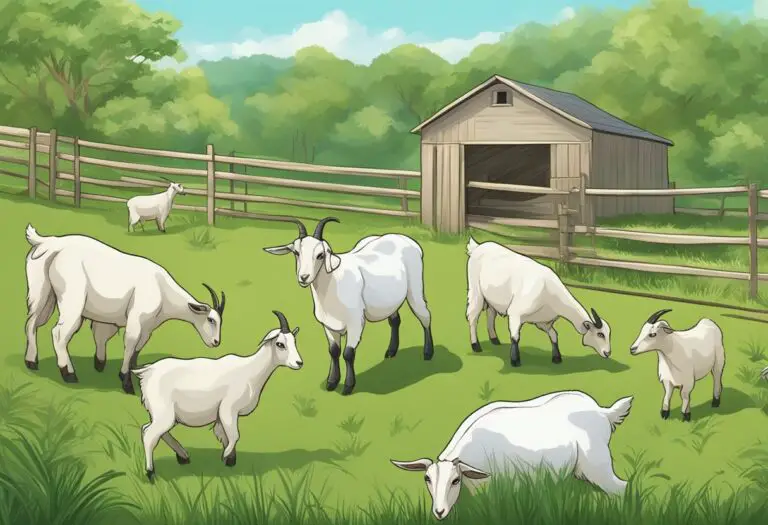What is the Recommended Age for Breeding Goats: Expert Advice
Breeding goats can be a profitable venture for farmers and homesteaders alike. However, it is important to consider the age at which goats should be bred to ensure the health and productivity of the animals. While there is no one-size-fits-all answer to the question of when to breed goats, there are recommended age ranges for different breeds and genders.
For female goats, also known as does, the recommended age for breeding varies based on the breed and size of the animal. Generally, does can be bred for the first time between the ages of 8 and 10 months, but some larger breeds may not be ready until they are a year old. It is important to wait until the doe has reached at least 80% of her adult weight before breeding to ensure a healthy pregnancy and delivery. On the other hand, male goats, or bucks, can be bred as early as 3 months of age, but it is recommended to wait until they are at least 7 months old to ensure they are fully mature and able to produce healthy offspring.
Overall, the recommended age for breeding goats depends on several factors, including the breed, size, and gender of the animal. It is important to do research and consult with a veterinarian to determine the best age to breed your goats to ensure their health and productivity.
Understanding Goat Breeding

Breeding Age Fundamentals
Breeding goats can be a profitable venture, but it is important to understand the fundamentals of breeding age. Female goats, also known as does, reach sexual maturity between the ages of 4 to 12 months, depending on their breed and size. Male goats, also known as bucks, become sexually mature between the ages of 4 to 8 months.
It is important to note that breeding goats too early or too late can have negative consequences. Breeding does too early can lead to health problems and stunted growth, while breeding them too late can lead to difficulties in delivering their offspring. Additionally, breeding bucks too early can result in poor-quality sperm, while breeding them too late can lead to a decline in their fertility.
Factors Influencing Breeding Age
Several factors can influence the recommended breeding age for goats. These factors include:
- Breed: Different goat breeds reach sexual maturity at different ages. For instance, Nigerian Dwarf goats reach sexual maturity at a younger age than other breeds.
- Size: Smaller goats tend to reach sexual maturity at a younger age than larger goats.
- Health: Goats that are healthy and well-nourished tend to reach sexual maturity earlier than those that are not.
- Environment: The environment in which goats are raised can also affect their breeding age. Goats that are raised in a stress-free and comfortable environment tend to reach sexual maturity earlier than those that are not.
It is important to consider these factors when determining the recommended breeding age for goats. By doing so, farmers can ensure that their goats are healthy and productive, which can lead to a profitable breeding venture.
Optimal Breeding Ages

Doe Maturity
The optimal age for breeding a doe depends on its breed and size. Generally, a doe should reach maturity before breeding to ensure successful conception and healthy offspring. The recommended age for breeding a doe is between 8 and 10 months, but some larger breeds may need to wait until they are 12 to 18 months old.
Breeding a doe too early can lead to complications during pregnancy and delivery, as well as health issues later in life. It is important to monitor the doe’s growth and development before considering breeding.
Buck Maturity
Bucks should also be mature before breeding to ensure successful mating and healthy offspring. The recommended age for breeding a buck is between 8 and 10 months, but some larger breeds may need to wait until they are 12 to 18 months old.
Breeding a buck too early can lead to infertility and poor quality sperm, which can result in low conception rates and unhealthy offspring. It is important to monitor the buck’s growth and development before considering breeding.
Overall, it is important to wait until both the doe and buck are mature before breeding to ensure successful conception and healthy offspring.
Health and Nutrition

Pre-Breeding Health Check
Before breeding goats, it is important to ensure that they are in good health. A pre-breeding health check should be conducted to identify any health issues that may affect the breeding process or the health of the offspring. The health check should include a physical examination, fecal analysis, and blood tests for diseases such as brucellosis and CAE (Caprine Arthritis Encephalitis). Any health issues should be addressed before breeding.
Nutritional Requirements for Breeding
Proper nutrition is essential for goats to reach their full breeding potential. The nutritional requirements for breeding goats vary depending on their age, weight, and stage of pregnancy. Breeding goats require a diet that is high in protein, energy, and minerals. It is recommended to feed them a diet that consists of 16-18% protein and 70-80% total digestible nutrients (TDN).
During the breeding season, it is important to supplement the goat’s diet with minerals such as calcium, phosphorus, and selenium. These minerals are essential for the development of healthy offspring. A mineral block or loose mineral supplement can be provided to ensure that the goats receive the necessary minerals.
In addition to a balanced diet, breeding goats require access to clean water at all times. Water is essential for maintaining proper hydration and for the development of healthy offspring. It is recommended to provide fresh, clean water in a clean container that is accessible to all goats.
By ensuring that goats receive proper nutrition and undergo a pre-breeding health check, breeders can increase their chances of having healthy offspring and a successful breeding season.
Breeding Management

Breeding goats can be a complex process that requires careful planning and management. Proper breeding management is essential for ensuring successful breeding and healthy offspring. This section will cover two important aspects of breeding management: Estrus Cycle Monitoring and Breeding Season Timing.
Estrus Cycle Monitoring
Estrus cycle monitoring is the process of tracking a female goat’s reproductive cycle to determine the best time for breeding. This can be done by observing the goat’s behavior and physical changes, such as swelling of the vulva and discharge from the vagina. Additionally, there are several methods for determining when a goat is in heat, including using a teaser buck or hormone injections.
It is recommended to monitor a goat’s estrus cycle for at least two cycles before breeding to ensure accurate timing. This helps to increase the chances of a successful breeding and healthy offspring.
Breeding Season Timing
Breeding season timing is an important factor in successful goat breeding. The breeding season for goats typically occurs during the fall and winter months, with the peak season being between September and December.
It is important to consider the age and health of the female goat before breeding. It is generally recommended to wait until a female goat is at least 8-10 months old and has reached a weight of 80-100 pounds before breeding. Additionally, female goats should be in good health and free of any infections or diseases.
In conclusion, proper breeding management is essential for successful goat breeding. By monitoring a goat’s estrus cycle and timing breeding season appropriately, breeders can increase the chances of producing healthy offspring.
Genetic Considerations

Breeding goats is a complex process, and genetic considerations play a crucial role in determining the recommended age for breeding. Here are some important factors to consider:
Selective Breeding
Selective breeding involves choosing the best goats for breeding based on specific traits such as milk production, body size, and resistance to disease. It is essential to select goats with desirable traits that will be passed down to their offspring, ensuring the herd’s genetic improvement. However, selective breeding requires careful consideration of the goats’ age, as breeding too young or too old can result in genetic defects and health problems.
Herd Improvement Strategies
Herd improvement strategies involve monitoring and tracking the herd’s genetic progress over time. This process helps identify which goats are producing the best offspring and which ones need to be culled. By using herd improvement strategies, farmers can ensure that their goats are breeding at the optimal age, resulting in healthier offspring with desirable traits.
Overall, genetic considerations are critical when determining the recommended age for breeding goats. Farmers must carefully consider the goats’ age, health, and genetic traits to ensure that they are producing healthy offspring with desirable characteristics. By using selective breeding and herd improvement strategies, farmers can ensure that their goats are breeding at the optimal age and producing high-quality offspring.
Post-Breeding Care

After breeding, it is important to provide proper care for the goat to ensure a successful pregnancy and delivery. This includes monitoring the goat’s pregnancy and providing postpartum recovery care.
Pregnancy Monitoring
During pregnancy, the goat should be monitored closely for any signs of illness or complications. This includes regular check-ups with a veterinarian and monitoring the goat’s weight and nutrition.
It is important to ensure that the goat is receiving proper nutrition, including a balanced diet and access to clean water. Additionally, the goat should be kept in a clean and comfortable environment to reduce stress and minimize the risk of infection.
Postpartum Recovery
After giving birth, the goat will need time to recover and bond with her offspring. It is important to provide the goat with a clean and comfortable space to rest and nurse her young.
During this time, the goat should be monitored for any signs of illness or complications. This includes checking the goat’s udder for signs of infection and monitoring her appetite and behavior.
It is also important to provide the goat with proper nutrition during this time, including a balanced diet and access to clean water. Additionally, the goat should be given time to rest and recover before being bred again.
By providing proper care during and after breeding, goat owners can help ensure the health and well-being of their animals and increase the likelihood of successful pregnancies and deliveries.
Ethical Breeding Practices

When it comes to breeding goats, it is important to follow ethical practices to ensure the health and well-being of both the mother and offspring. Here are some recommended practices:
Proper Age for Breeding
Goats should not be bred until they have reached a certain age and weight. The recommended age for breeding female goats is between 8 and 10 months, and they should weigh at least 80 pounds. Male goats, on the other hand, should not be used for breeding until they are at least 6 months old and weigh around 100 pounds.
Proper Nutrition
Proper nutrition is essential for the health of the mother and offspring. The mother should be fed a balanced diet that includes adequate amounts of protein, vitamins, and minerals. It is also important to provide clean water and adequate grazing space.
Proper Housing
Goats should be housed in a clean and dry environment that provides adequate space for movement and exercise. The housing should be well-ventilated and protected from extreme weather conditions.
Regular Health Checks
Regular health checks are important to ensure that the mother and offspring are healthy. This includes monitoring their weight, checking for signs of illness, and providing necessary vaccinations and deworming.
By following these ethical breeding practices, goat breeders can ensure the health and well-being of their animals and produce healthy offspring.

